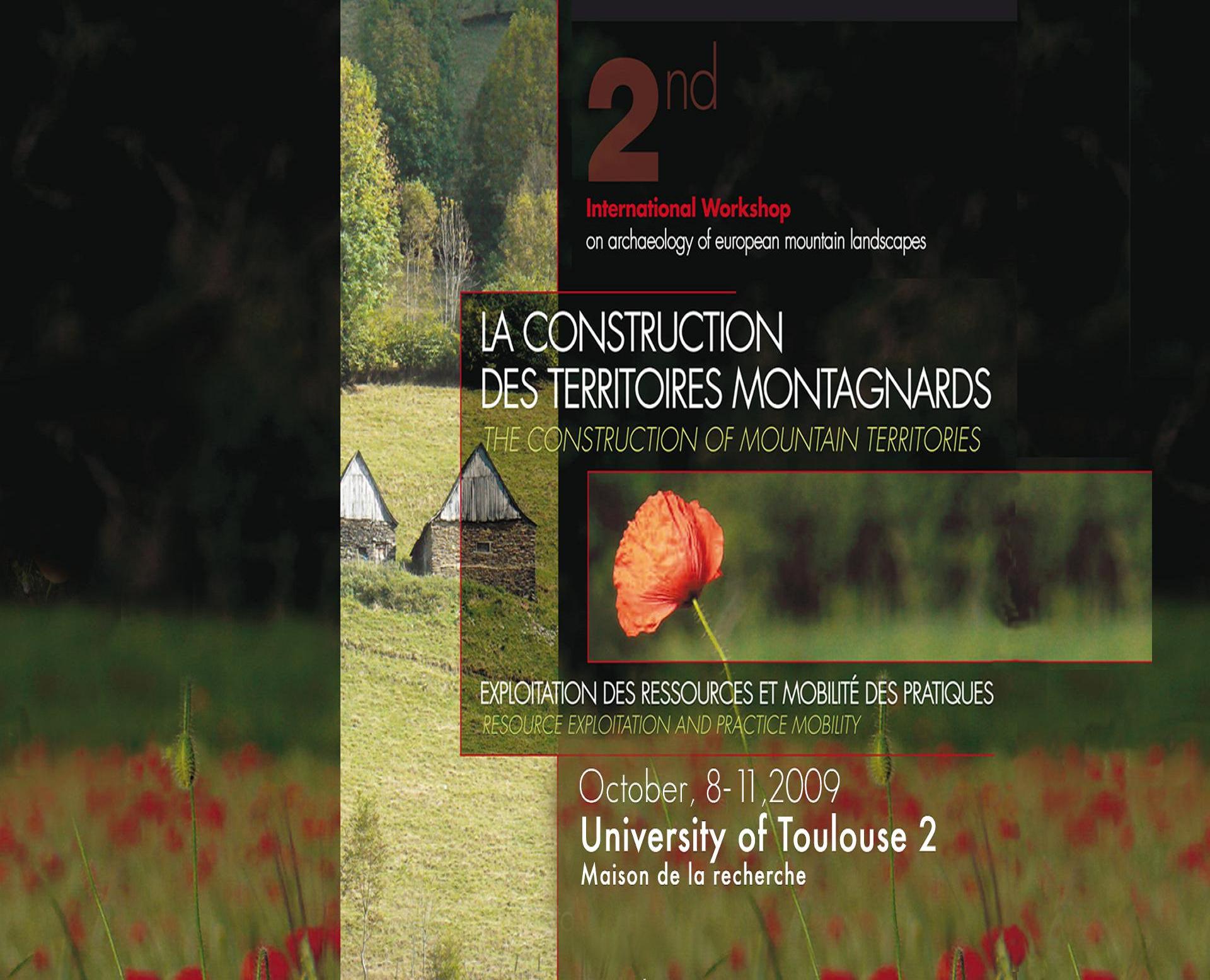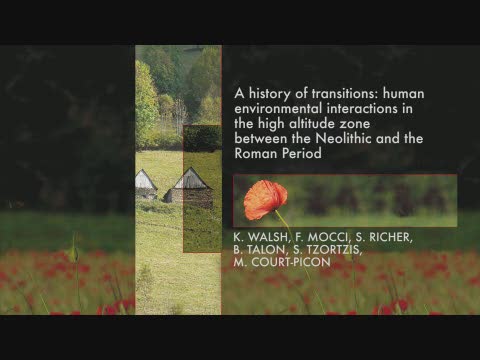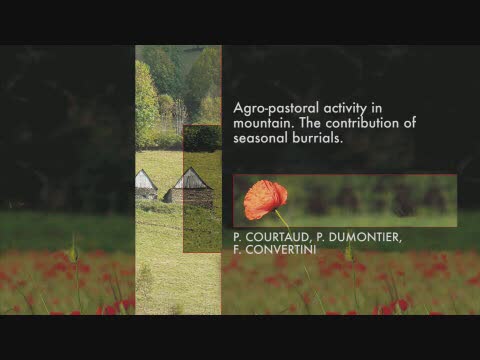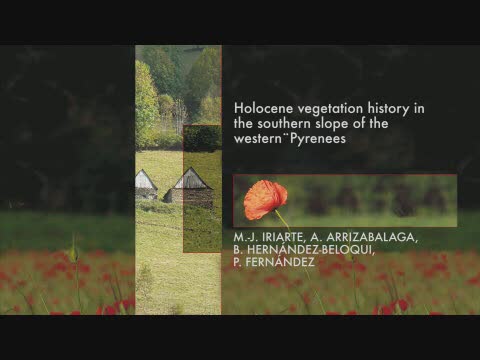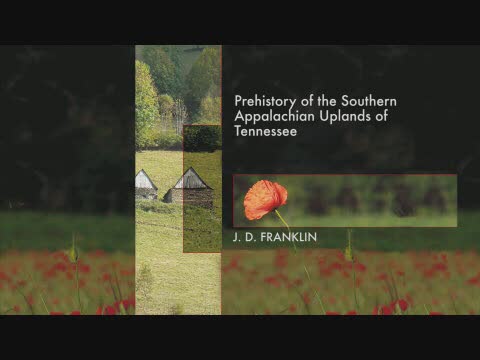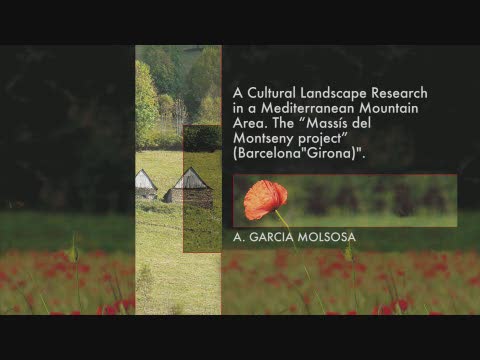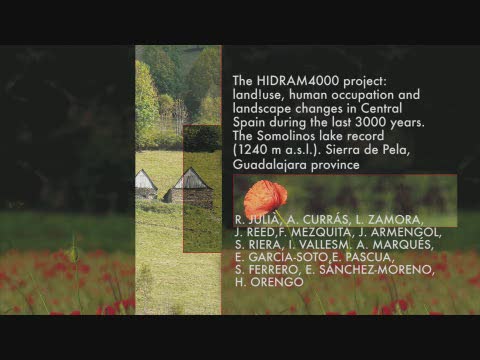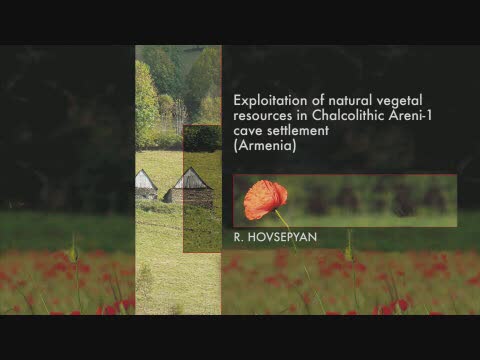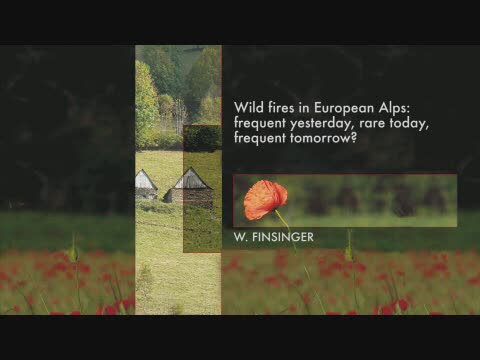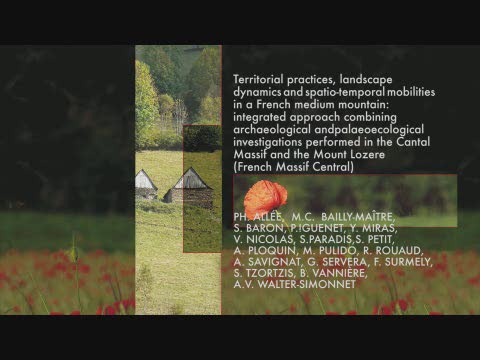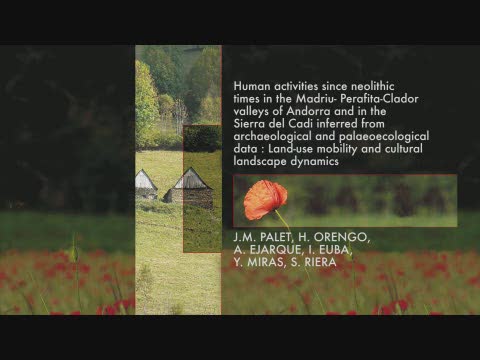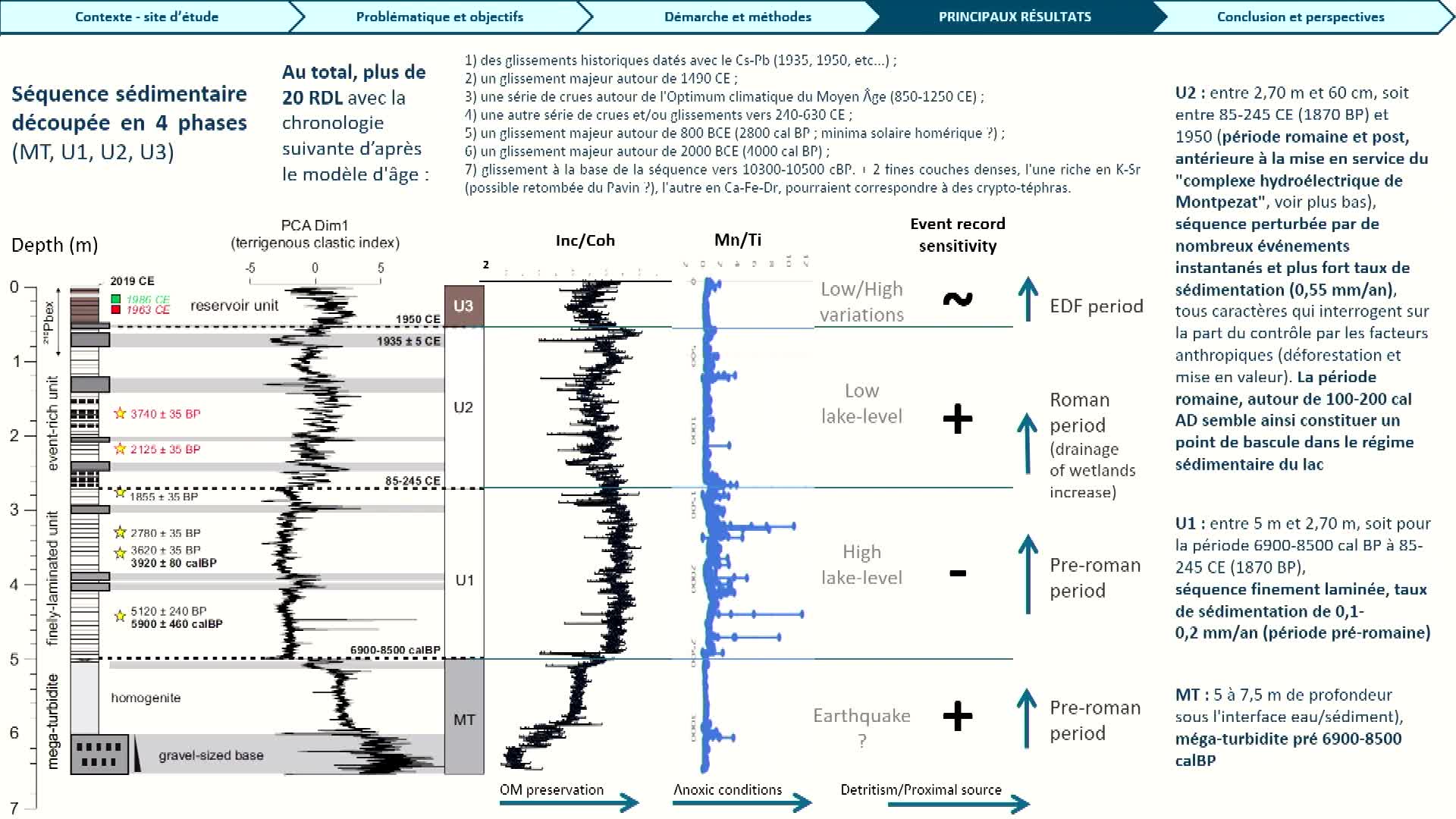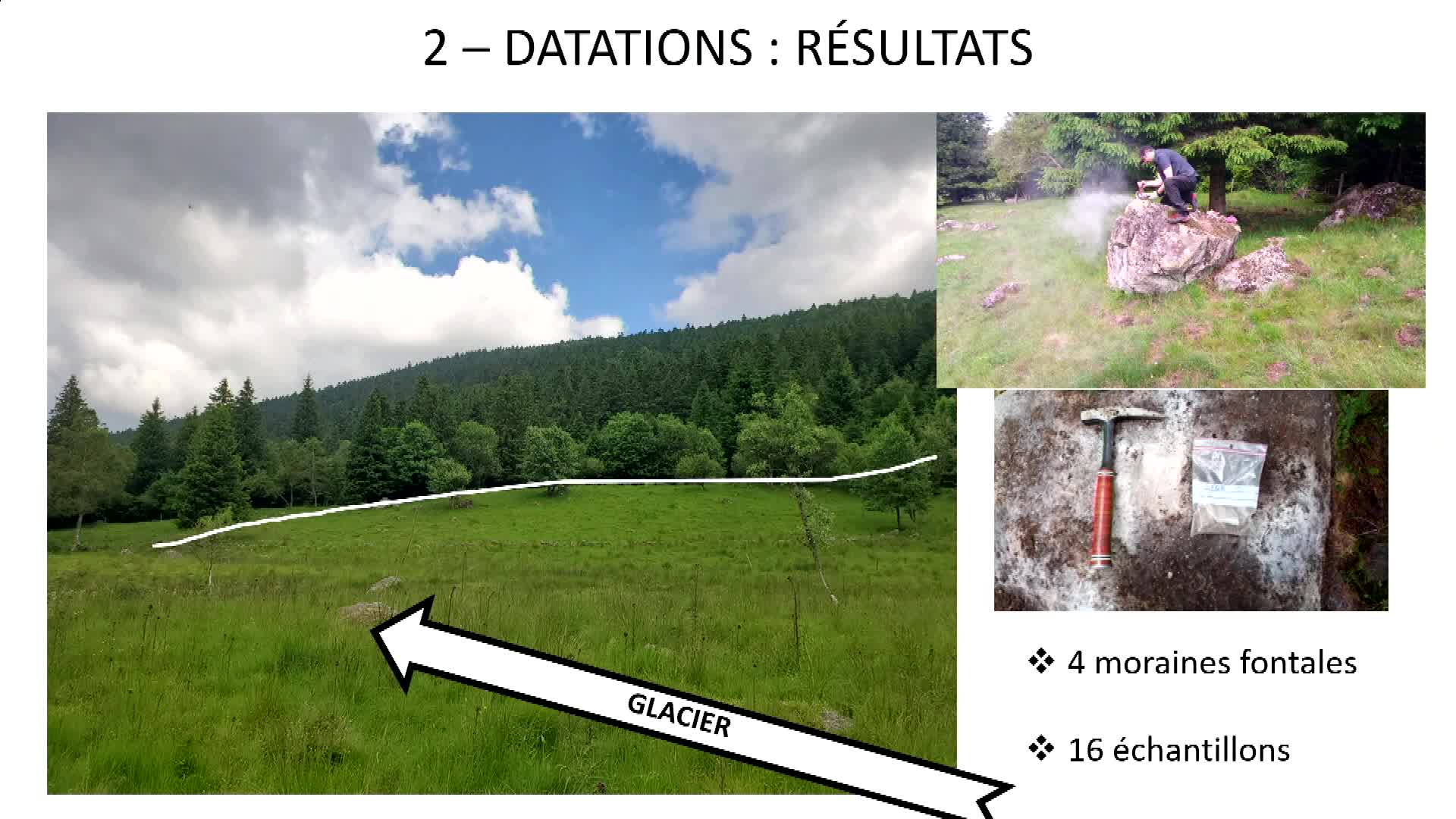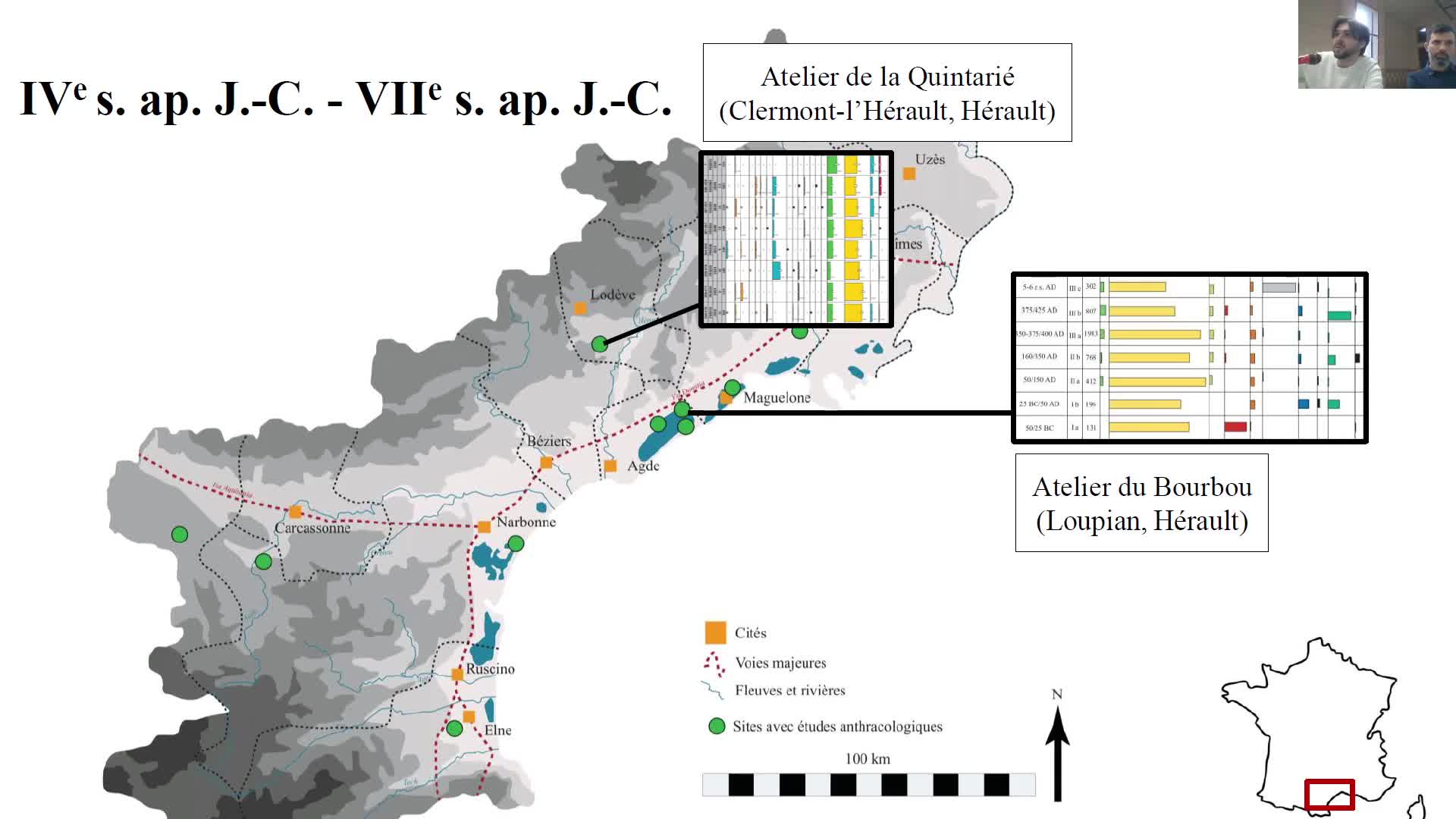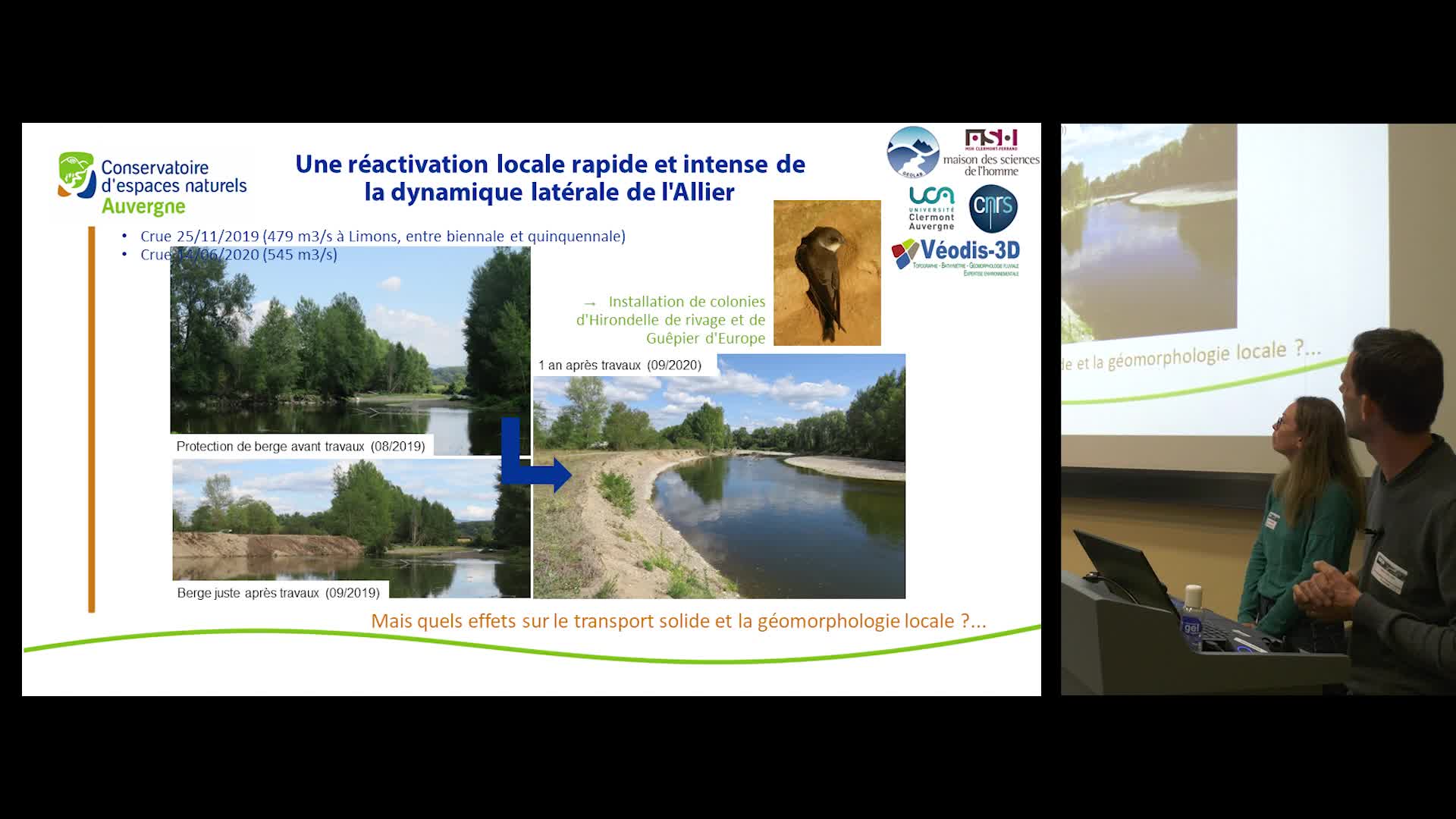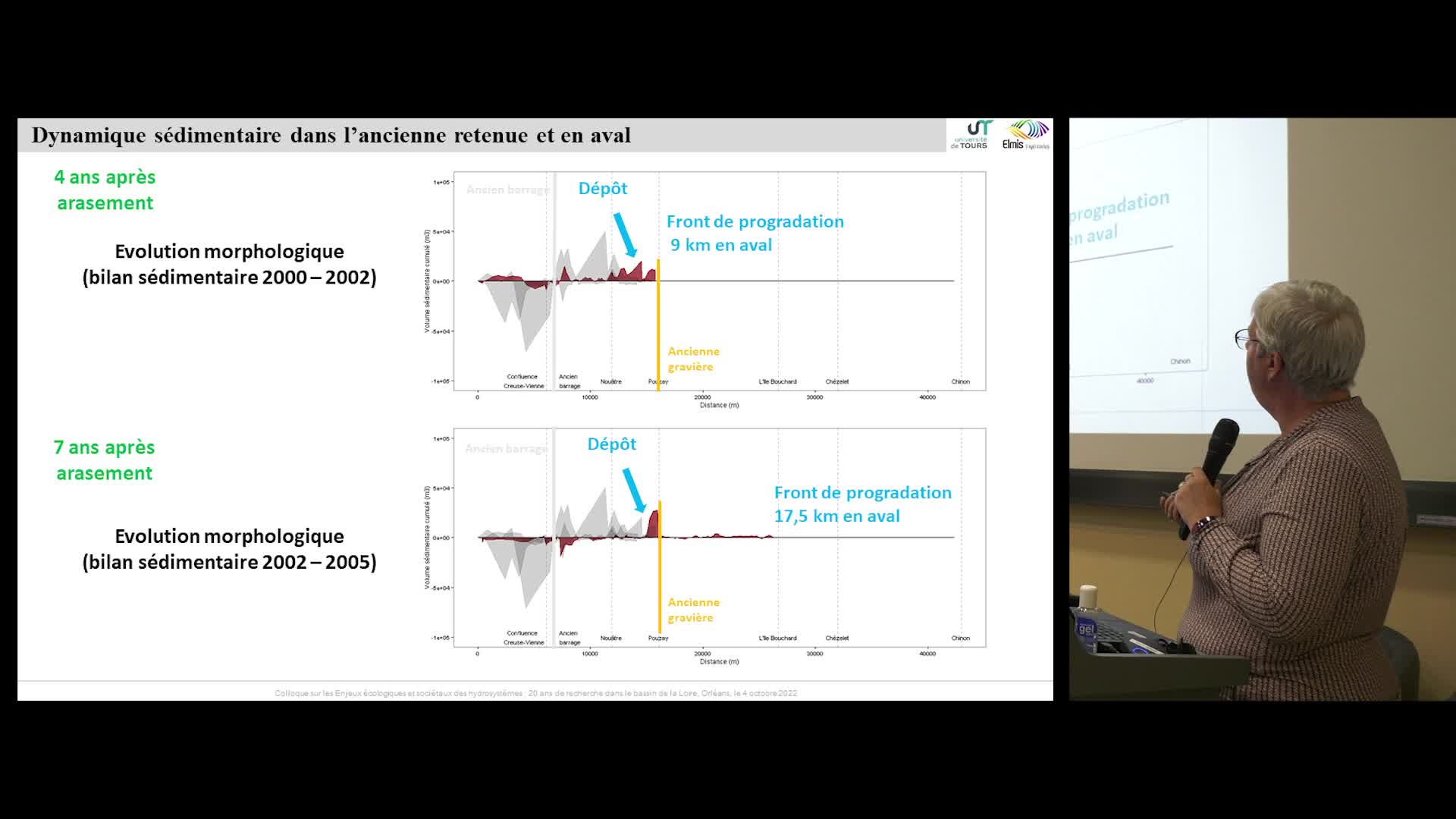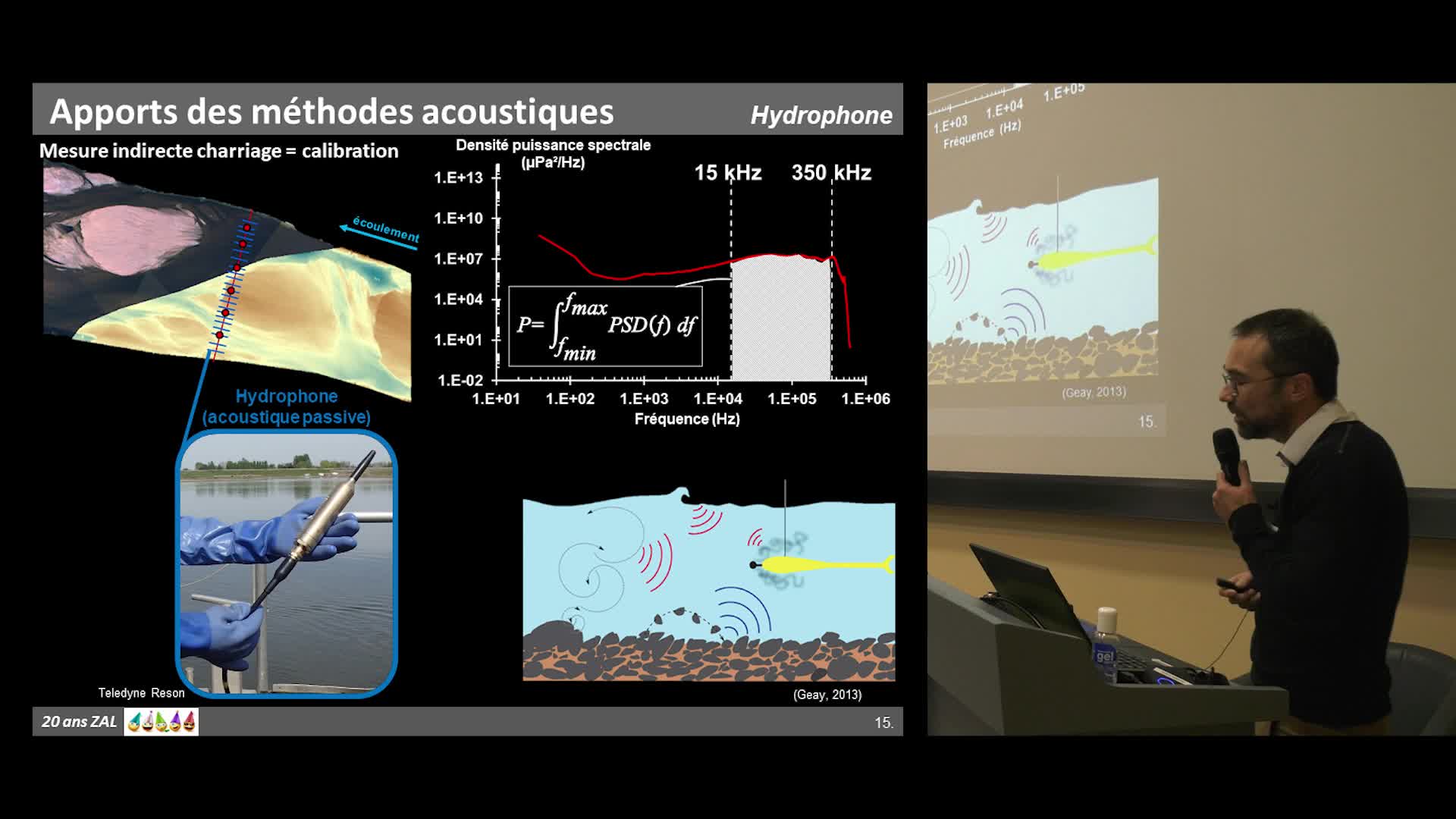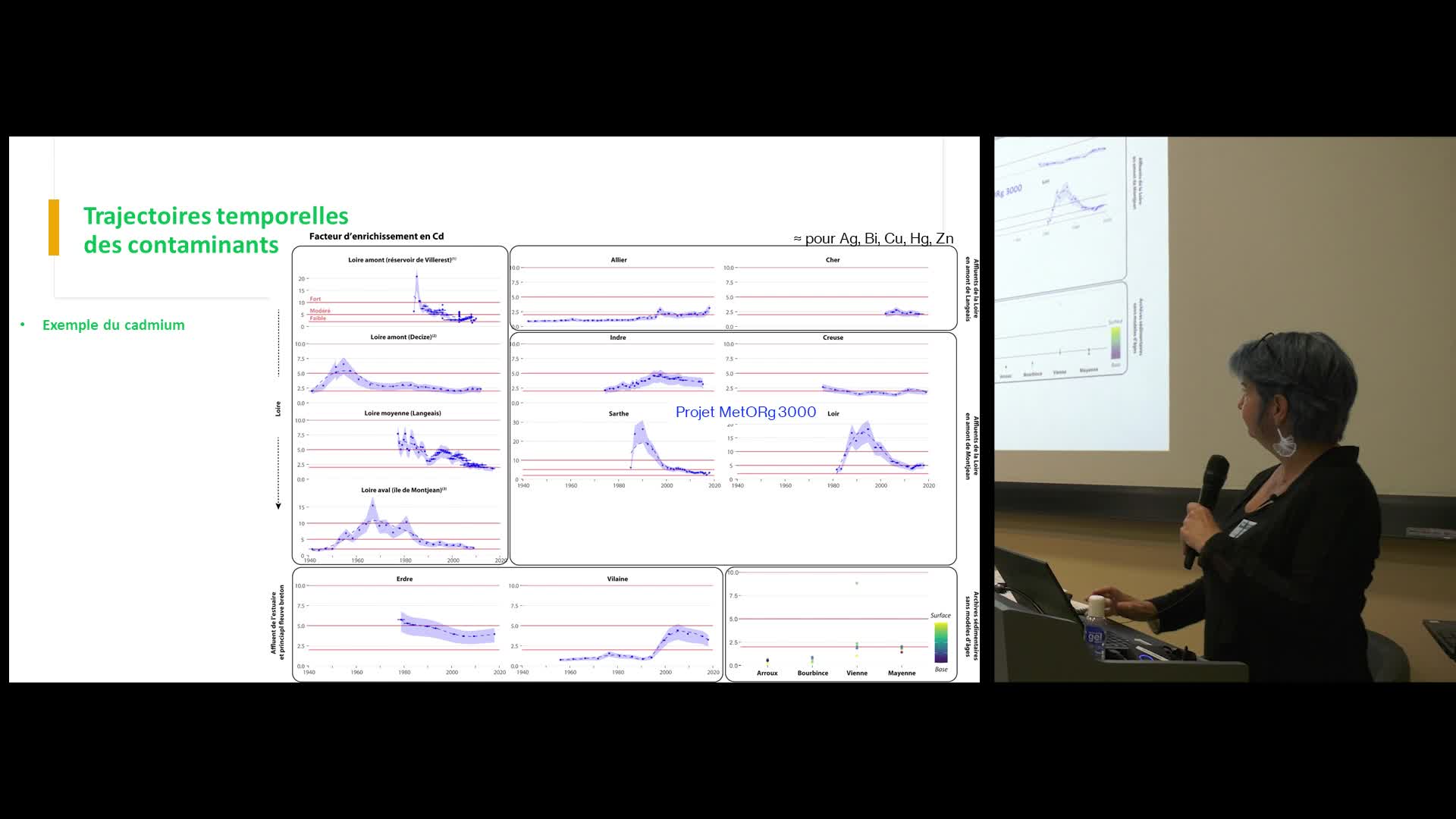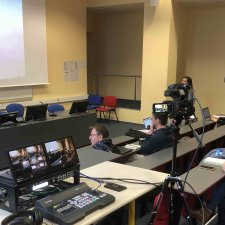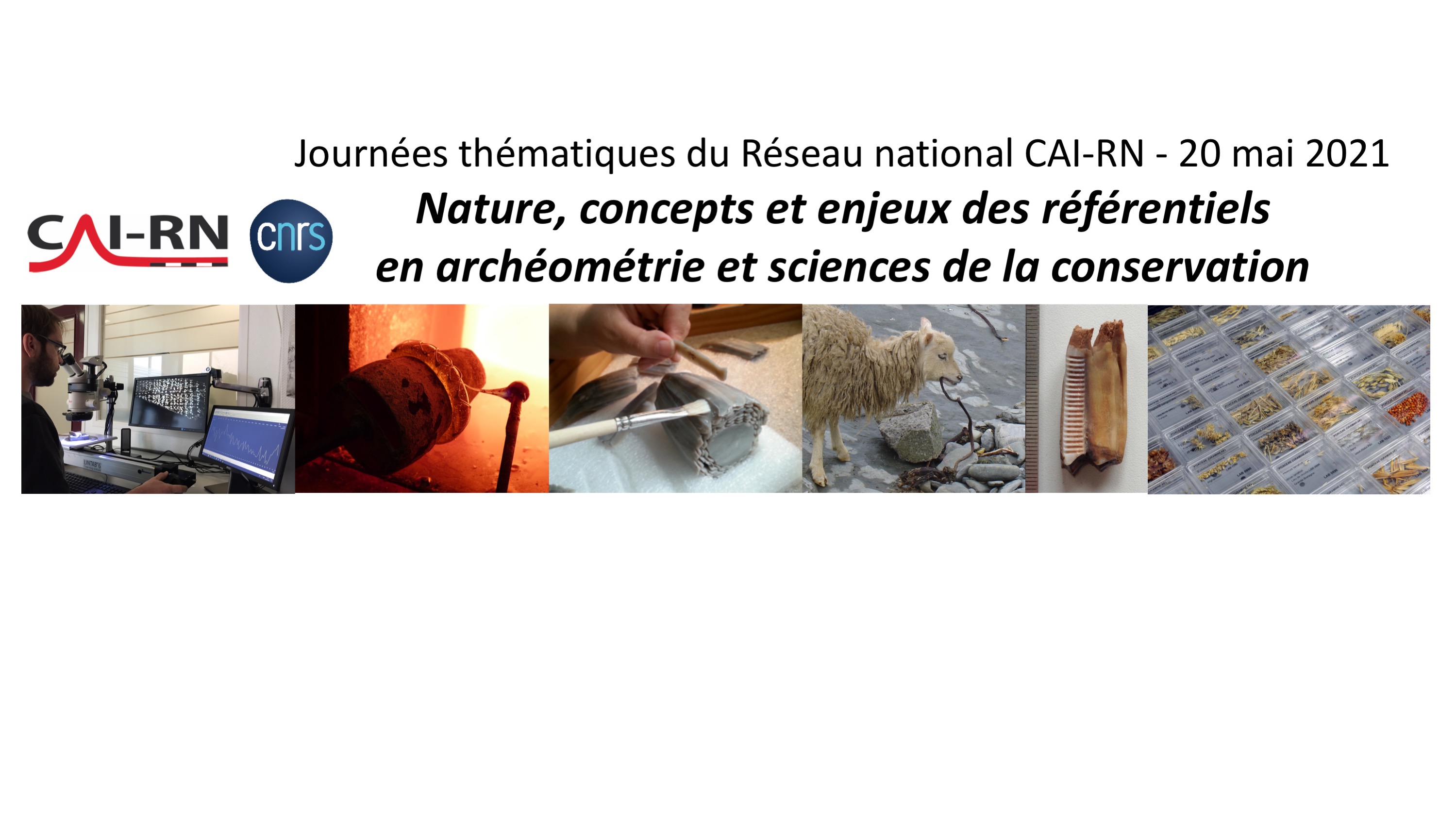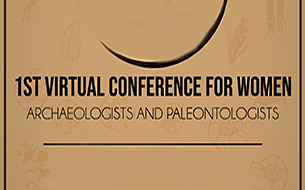Notice
Mountain anthropization in Alps : a multidisciplinary look in the Pygmalion program / F. Arnaud
- document 1 document 2 document 3
- niveau 1 niveau 2 niveau 3
Descriptif
Mountain anthropization in Alps : a multidisciplinary look in the framework of Pygmalion research program. Fabien ARNAUD. In "La construction des territoires montagnards : exploitation des ressources et mobilité des pratiques", 2e International Workshop on archaeology of european mountain landscape, organisé par les laboratoires GEODE, FRAMESPA, GEOLAB et Chrono-Environnement. Université Toulouse 2-Le Mirail, 8-11 octobre 2009. [seconde journée]
Pygmalion (PaleohYdrology and huMAn-cLimate-envIronment interactiONs in the Alps) is a multidisciplinary research program funded by ANR that aims to a reconstruction of climate evolution and human impact on the environment, in an area restricted to the northern part of the French Alps and the related forelands. Underlying objective is to improve our understanding of the natural climatic variability during the Holocene in continental contexts, and although of how societies adapted to these variations.
Several study « windows » were chosen from plain area in the lower Dauphiné to th highest mountain in Mont Blanc massive. In this communication, we are going focus on the area including Arve and Giffre valleys (Savoie), which reaches approximately 2300 m at its higher point. Except mineral cliffs surrounding Anterne mountain, the whole massif is located in the subalpine vegetation belt, and represents the western boundary of larch and arolla pine forests. Nevertheless, present day vegetation is mainly asylvatic, and woody formations are limited to expanding green alder thickets and rhododendron heaths, in spite of the presence of scarce larches and spruces growing on unreachable cliffs.
Unless the landscape is obviously deeply anthropized, the history of the relationship between societies and their environment haven’t been much studied in the area. Pygmalion program is an opportunity for crossing the data from various disciplines from natural and human sciences (archaeology, history, palaeobotany, geosciences). The results obtained after only one year of work through palynology, sedimentology, plant macro-remains analysis and archaeology are convergent and identify key-phases of landscape evolution.
Impacts of human activities on the vegetation as well as on erosion are recorded as early as the end of the Neolithic period. The decline of woody vegetation is continuous all along Protohistory to the benefit of alder thickets. Several badly preserved stone structures that evoke folds and shepherd shelters seem to be linked to pastoral practises. According to field observation, they could date back to Protohistory or even to the end of the Neolithic, but this still have to be confirmed by 14C data (forthcoming).Finally, the dramatic decline of trees really began during the Roman period, which seems to be also the date of arolla pine local extinction. The corollary of that gradual deforestation is slopes destabilization which makes them more sensitive to climate-driven erosive phenomena.
Intervention / Responsable scientifique
Dans la même collection
-
La construction des territoires montagnards : exploitation des ressources et mobilité des pratiques…
GalopDidierThe occupation and the exploitation of mountain environments, both during conquest and maximum demographic phases, or on the contrary, during desertification phases, differ in geographical
-
Human environmental interactions in high altitude zone between Neolithic and roman period / K. Walsh
WalshKevinA History of Transitions : human environmental interactions in the high altitude zone between Neolithic and roman period. Kevin WALSH. In "La construction des territoires montagnards : exploitation
-
L'agro-pastoralisme en milieu montagnard : l'apport des sépultures saisonnières / Patrice Courtaud
CourtaudPatriceL'agro-pastoralisme en milieu montagnard : l'apport des sépultures saisonnières. Patrice COURTAUD. In "La construction des territoires montagnards : exploitation des ressources et mobilité des
-
L'évolution végétale holocène sur le versant sud des Pyrénées occidentales / Maria-José Iriarte
IriarteMaría JoséL'évolution végétale holocène sur le versant sud des Pyrénées occidentales. Maria José IRIARTE. In "La construction des territoires montagnards : exploitation des ressources et mobilité des pratiques"
-
Prehistory of the Southern Appalachian uplands of Tennessee / Jay Franklin
FranklinJay D.Prehistory of the Southern Appalachian uplands of Tennessee. Jay FRANKLIN. In "La construction des territoires montagnards : exploitation des ressources et mobilité des pratiques", 2e International
-
A cultural landscape research in a mediterranean mountain (Barcelona-Girona) / A. Garcia Molsosa
Garcia MolsosaArnauA cultural landscape research in a mediterranean mountain area : the "Massis del Montseny project" (Barcelona-Girona) / A. GARCIA MOLSOSA. In "La construction des territoires montagnards :
-
The Hidram4000 project : land use, human occupation and lanscape changes in Spain / A. Curras
Currás DominguezAndresThe Hidram4000 project : land use, human occupation and lanscape changes in Spain during the last 3000 years. The Somolinos lake record (1240 M A.S.L.) : Siera de Pela, Guadalajara Province. Andres
-
Exploitation of natural vegetal resources in chalcolithic areni-1 cave (Armenia) / R. Hovsepyan
HovsepyanRomanExploitation of natural vegetal resources in chalcolithic areni-1 cave settlement (Armenia). Roman HOVSEPYAN ovsepyan, Roman. In "La construction des territoires montagnards : exploitation des
-
Wildfires in european alps : frequent yesterday, rare today, frequent tomorrow ? / W. Finsinger
FinsingerWalterWildfires in european alps : frequent yesterday, rare today, frequent tomorrow ?. Walter Finsinger. In "La construction des territoires montagnards : exploitation des ressources et mobilité des
-
Territorial practices, landscape dynamics and mobilities in a french mountain / P. Allée, Y. MIras
AlléePhilippeMirasYannickTerritorial practices, landscape dynamics and spatio-temporal mobilities in a french medium mountain : integrated approach combining archaeological and paleoecological inverstigations performed in the
-
Exploitation des vallées andorranes depuis le Néolithique/ J.-M. Palet Martinez, H. Orengo Romeu
Palet i MartínezJosep M.Orengo RomeuHèctor A.L'exploitation des ressources des vallées andorranes du Madriu-Perafita-Claror et de la chaîne du Cadi (Pyrénées orientales) depuis le Néolithique à partir des données archéologiques et
-
New data about the human occupation, environmental history, landscape changes in Pyrenees / Emengol…
Gassiot BallbèErmengolThe Excava project : new data about the human occupation, environmental history and landscape changes in southern Pyrenees. Emengol GASSIOT BALLBE. In "La construction des territoires montagnards :
Sur le même thème
-
ARCHISS-2 Le Lac d’Issarlès : archives environnementales, volcaniques et sismiques des 60 derniers …
DefiveEmmanuelleEmmanuelle Defive, membre de GEOLAB, présente le projet ARCHISS-2.
-
GLAMCE - Dater les paysages glaciaires du Forez : combinaison d’une technique low-tech (Marteau de …
RousselErwanAncrenazArthurArthur Ancrenaz et Erwan Roussel, membres de GEOLAB, présentent le projet GLAMCE.
-
Approvisionner le feu en bois. Regard anthracologique sur l’exploitation du Bois des Lens et les us…
VaschaldeChristopheChardonneau-HenneuseJulienApprovisionner le feu en bois. Regard anthracologique sur l’exploitation du Bois des Lens et les usages du combustible par les potiers de l’Antiquité tardive.
-
Restauration de la dynamique fluviale de l'Allier sur l'Ile des Cailloux
J. Saillard (CEN Auvergne), Arfeuillère (CNRS, GEOLAB, Université Clermont Auvergne), Restauration de la dynamique fluviale de l'Allier sur l'Ile des Cailloux
-
Impacts de l'arasement du barrage de Maisons Rouges (France) sur la dynamique sédimentaire et la bi…
N. Richard (CETU, Elmis, CITERES, Université de Tours), Ph. Juge (CETU, Elmis, Université de Tours), S. Rodrigues (CITERES, Université de Tours), Impacts de l'arasement du barrage de Maisons Rouges
-
Vers une optimisation de la mesure des flux solides de fond en Loire : apports croisés de l'aDcp et…
RodriguesStéphaneJ. Le Guern, (GINGER BURGEAP R et D et CITERES, Université de Tours), S. Rodrigues (CITERES, Université de Tours), Th. Geay (GINGER BURGEAP R et D), S. Zanker (EDF, Division Technique Générale), A.
-
Trajectoires des contaminants historiques enregistrés dans les sédiments du bassin de la Loire : re…
Grosbois-BacchiCécileC. Grosbois (GéHCO, Université de Tours), E. Dhivert (GéHCO, Université de Tours), L. Mondamert (IC2MP – Université de Poitiers), J. Labanowski (IC2MP – Université de Poitiers), Marc Desmet (GéHCO,
-
ARCHISS - Le Lac d’Issarlès : archives environnementales, volcaniques et sismiques des 60 derniers …
DefiveEmmanuelleEmmanuelle Defive, MCF en Géographie physique, Géomorphologie (UCA) et membre du laboratoire GEOLAB (UMR 6042), présente les principaux résultats scientifiques du projet ARCHISS.
-
Alfredo Mayoral - « Gergovie : nouvelles recherches géoarchéologiques et paléoenvironnementales »
Le jeudi 16 septembre 2021, à 20h30, sur Facebook, Page Musée de Gergovie, Alfredo Mayoral, géoarchéologue, à l'Institut Catalan d’Archéologie Classique et à GEOLAB (UMR 6042 CNRS / UCA UNILIM), a
-
M. DJAMALI et M. MASHKOUR, Réflexions sur la contribution des coprolithes de hyènes modernes comme …
Réflexions sur la contribution des coprolithes de hyènes modernes comme référentiel pour les reconstitutions paléoenvironnementales. Morteza DJAMALI1, Marjan MASHKOUR2 1-CNRS, IMBE (morteza
-
"Ouranopithecus macedoniensis" (late Miocene, Greece): analysis of mandibular fragments using …
IoannidouMelaniaOuranopithecus macedoniensis (late Miocene, Greece): analysis of mandibular fragments using 3D geometric morphometrics / Melania Ioannidou, in colloque "1st Virtual Conference for Women
-
What is shaping the brain? A perspective on brain size evolution in carnivorans / Margot…
MichaudMargotWhat is shaping the brain? A perspective on brain size evolution in carnivorans / Margot Michaud, in colloque "1st Virtual Conference for Women Archaeologists and Paleontologists. Nouveaux


